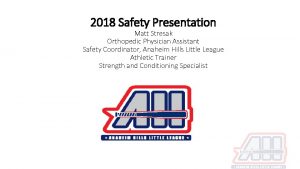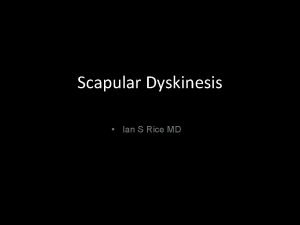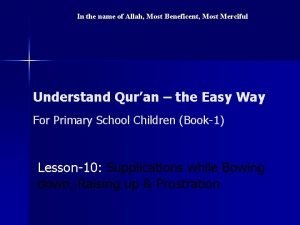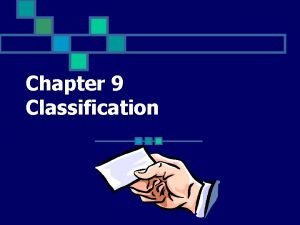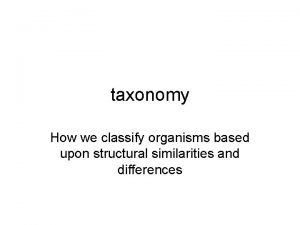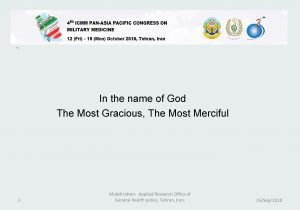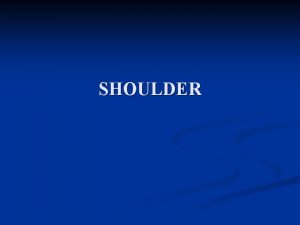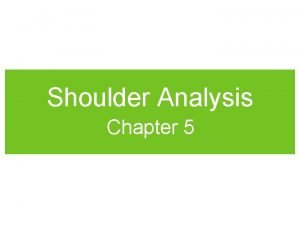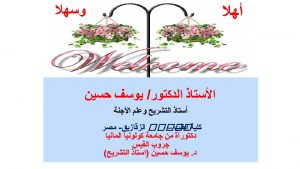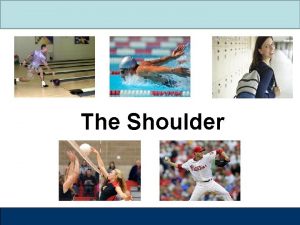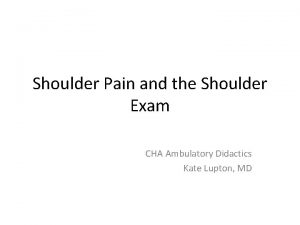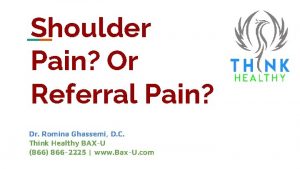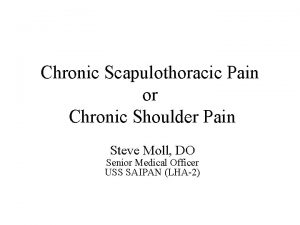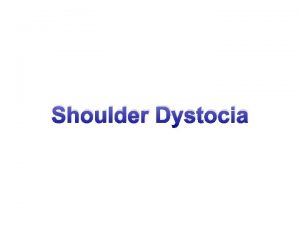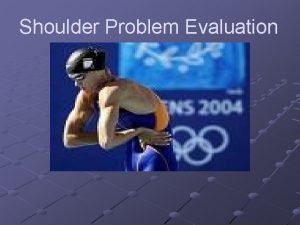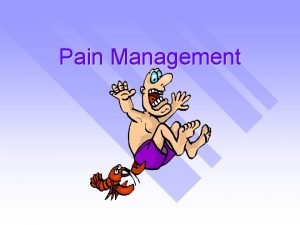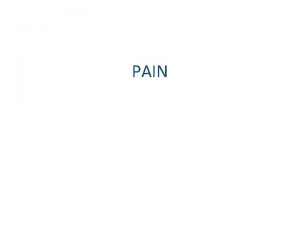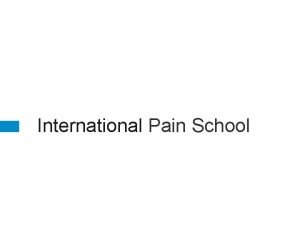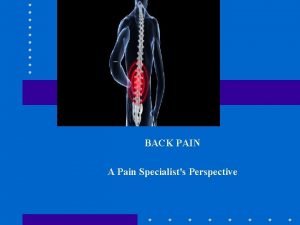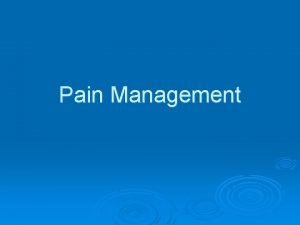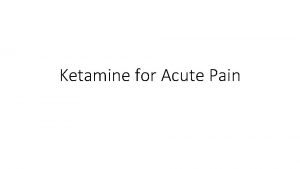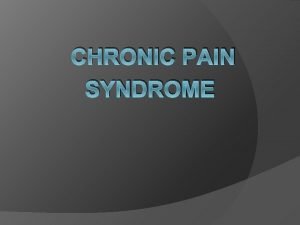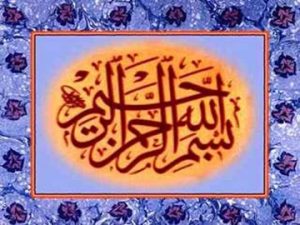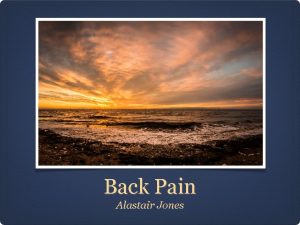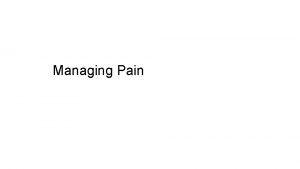Shoulder pain q The shoulder is the most































- Slides: 31

Shoulder pain

q. The shoulder is the most mobile joint in the human body q. Shoulder pain involves any pain in or around the shoulder joint q. Shoulder pain is a most common MSK complain is the most mobile joint in human b

• • • Anatomy History Physical exam Etiology approach


The Rotator Cuff Muscles Rotator Cuff Supraspinatus: Infraspinatus: Teres Minor: Subscapularis: Abduction External rotation Internal rotation


MSK Shoulder Pain Differential Articular Causes • and nitis eps ears sitis litis • • • Glenohumeral (GH) and acromoclavicular (AC) arthritis Ligamentous and labral lesions GH and AC joint instability Osseus: fracture, osteonecrosis, neoplasm, infection • •

Taking Your History • • Age Hand dominance Occupation Sports/physical activities Trauma Onset Location Character • Duration • Grinding or clicking • Radiation • Weakness • Aggravating/relieving • Numbness/tingling factors Pain • Night pain • Effect on shoulder function • Stiffness/restriction of movement

The Physical Exam Inspection • Asymmetry Bony deformity or abnormal contour Muscle atrophy or bulge Scapular winging • •

poor posturealways using one hand or side of your body for writing carrying a heavy bag going about your daily activities sedentary lifestyle uneven hips pinched nerve flat feet osteoporosis shoulder injuries weak or tight muscles overuse or misuse of the shoulders incorrect sleeping position or only sleeping on one side

The Physical Exam Range of Motion • Active • Passive • Scapular movement • Strength Testing •

The Physical Exam Palpation AC, SC, and GH joints Biceps tendon Coracoid process Acromion Scapula • • •

Special Tests Rotator Cuff • “Drop-arm” • “Empty can, ” push • -off, and resistance testing Impingement Neer’s • Hawkins • •

Special Tests Biceps • Speed’s • Yergason’s • AC Joint • Cross-arm •

Special Tests Shoulder • Instability Sulcus sign • Apprehension, • relocation, release Load and shift •

Special Tests Labrum • O’Brien’s • Crank test • SLAPprehensio • n


oms fer? Specific Examples Rotator Cuff Pathology “Frozen Shoulder” Shoulder Instability AC Joint Separation Arthritis Labral Tear “SICK Scapula” • • Main points:

Rotator Cuff Pathology Diagnosis: • Xray – often negative • Ultrasound • Consider MRI if planning for surgery • Management: Tendinopathy or impingement – conservative treatment, PT, • subacromial GC injection Partial-thickness tear – PT (up to 12 weeks), possibly subacromial GC • injection Full-thickness tear – Ortho referral • •

“Frozen Shoulder” (Adhesive Capsulitis) Presentation & symptoms: Pain, often >3 months Progressive loss of ROM Age >40 yo Risk factors: immobility, DM, hypothyroidism • • • Physical exam findings: Limited active ROM, external rotation often 50% normal • Endpoint with passive ROM • •

“Frozen Shoulder” (Adhesive Capsulitis) Diagnosis: • CLINICAL! • Xray if need to rule-out fracture or OA • US later if concerned for RC pathology • Management: Set expectations • Pain control, gentle ROM exercises/PT • If severe, intra-articular GC injection under fluoroscopy • •

Shoulder (GH) Instability Presentation & symptoms: Pain Instability Age < 40 yo Transient neurologic symptoms History of dislocation or subluxation • • • Physical exam findings: • + sulcus • + apprehension & relocation • + load & shift testing •

Shoulder (GH) Instability Diagnosis: • Clinical • Xrays often normal • MR arthrogram if no improvement • Management: Activity modification • PT focused on aggressive strengthening • Refer to Ortho if no improvement with PT or if recurrent dislocation • •

Acute Shoulder Dislocation Physical Exam: • External rotation & abduction, palpable humeral head • Check innervation of skin over lateral deltoid! (Axillary nerve) • Diagnosis: • Clinical • Xray • Management: Relocate & immobilize • ROM exercises within 7 -10 days aggressive rehab program • •

AC Joint Separation Presentation & symptoms: • Direct blow to shoulder or FOOSH • Male contact sport athlete, ~20 yo • Pain/swelling • Physical exam findings: • Pain and swelling over AC joint “Stepped” deformity if more severe + cross-arm test + painful arc • •

AC Joint Separation Diagnosis: • Clinical + • Xray • Management: Types I-III: Non-operative (rest, ice, analgesics, sling for • immobilization, PT) Types IV+: Ortho referral for surgery • •

Shoulder Arthritis Presentation & symptoms: • Age >50 Progressive pain with activity Decreased ROM Impingement symptoms History of rotator cuff injury, previous trauma, or shoulder surgery • • • Physical exam findings: • AC joint: tenderness over AC joint, pain at extreme internal rotation, + • cross-arm test GH joint: decreased ROM, pain and crepitus at extremes of motion •

Shoulder Arthritis Diagnosis: • Clinical + • Xray • Management: • AC joint: • Activity modification, NSAIDs, GC injection • GH joint: • Goal = maintain function with adequate pain control • PT, glucosamine & chondroitin, intra-articular GC injection • Referral to Ortho if conservative treatment fails •

Labral Tear • Presentation & Symptoms: • Pain +/- instability • Clicking/popping • Overhead athlete, history of dislocation, history of trauma • Physical Exam: • Pain with passive external rotation • Pain with palpation of bicipital groove

Labral Tear Diagnosis: • Xrays usually normal but may show Hills-Sach lesion • MRI or MR arthrogram • Management: • Conservative: rest, NSAIDs PT • Operative: Ortho referral • If conservative measures fail, larger tears, concomitant RC tear •

Shoulder Summary History Physical Diagnosis <25, new Activity, Trauma, + Apprehension Overhead Sports, Acute or Chronic Shoulder Instability 25 -40, gradual onset, pain overhead activity + Empty Can + Neer Stage I Impingement (Supraspinatous Tendonopathy) >40, gradual onset, pain overhead activity, night pain + Empty Can + Neer + Hawkins Stage II/III Impingement (partial/complete rotator cuff tear) Gradual onset painful stiff shoulder. Often no h/o trauma + Decrease active and passive ROM +Neer Adhesive Capsulitis Repetitive motion, new lifting regimen, OA + Speed + Yergason Biceps Tendonitis (if Popeye, Biceps Tendon Rupture)
 Little league shoulder pain location
Little league shoulder pain location Lateral scapular winging
Lateral scapular winging What do early pregnancy cramps feel like
What do early pregnancy cramps feel like Pms or pregnancy
Pms or pregnancy Lewis mad pain and martian pain
Lewis mad pain and martian pain Guddi baji
Guddi baji In the name of allah the most
In the name of allah the most In the name of allah the most gracious the most merciful
In the name of allah the most gracious the most merciful In the name of allah the most beneficent the most merciful
In the name of allah the most beneficent the most merciful In the name of allah the most beneficent
In the name of allah the most beneficent Most general to most specific classification
Most general to most specific classification In the name of god most gracious most merciful
In the name of god most gracious most merciful In the name of allah the most beneficent the most merciful
In the name of allah the most beneficent the most merciful Arrangement of organisms
Arrangement of organisms Most general to most specific classification
Most general to most specific classification In the name of allah the most gracious the most merciful
In the name of allah the most gracious the most merciful In the name of allah the most beneficent the most merciful
In the name of allah the most beneficent the most merciful In the name of god, most gracious, most merciful prayer
In the name of god, most gracious, most merciful prayer Most general to most specific classification
Most general to most specific classification In the name of god the most gracious the most merciful
In the name of god the most gracious the most merciful Các châu lục và đại dương trên thế giới
Các châu lục và đại dương trên thế giới Mật thư tọa độ 5x5
Mật thư tọa độ 5x5 Bổ thể
Bổ thể Tư thế ngồi viết
Tư thế ngồi viết Giọng cùng tên là
Giọng cùng tên là Thẻ vin
Thẻ vin Thể thơ truyền thống
Thể thơ truyền thống Hát lên người ơi alleluia
Hát lên người ơi alleluia Từ ngữ thể hiện lòng nhân hậu
Từ ngữ thể hiện lòng nhân hậu Hươu thường đẻ mỗi lứa mấy con
Hươu thường đẻ mỗi lứa mấy con Diễn thế sinh thái là
Diễn thế sinh thái là Vẽ hình chiếu vuông góc của vật thể sau
Vẽ hình chiếu vuông góc của vật thể sau
